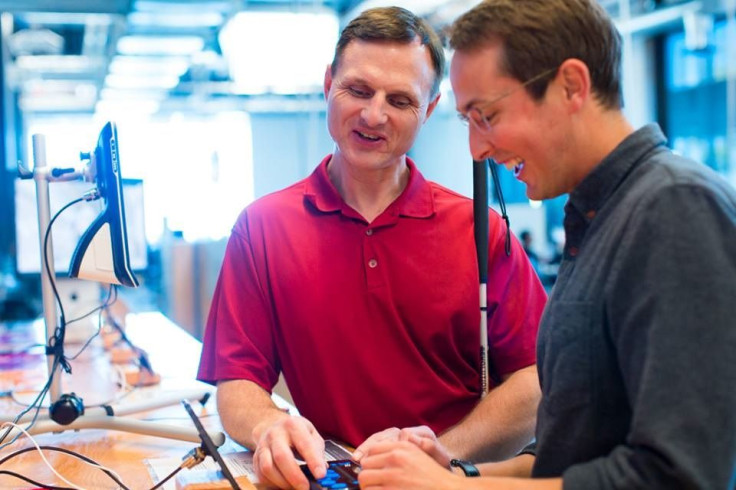Innovators use technology to connect people with disabilities to the digital landscape

Given the rapidity by which technology is establishing linkages across industries and nations, the concept of an individual or a group who is not connected to the World Wide Web is almost unthinkable. Connectivity is becoming the norm, and not the exception. The expansion of the Internet of all Things is pushing companies to reduce or remove any element that hinders it. Computer software coordinates the interaction of mobile truck drivers delivering their cargo, airlines are placing Wi-Fi features in planes flying at high altitudes, and network extenders, such as those from 5BARz International , are beefing up weak phone signals in remote areas that are far removed from cell structures.
Now, one sector that has been marginalised will be welcomed into inclusion in the digital landscape: the physically challenged or the differently abled. One clear indicator is the recently held 31st Annual International Technology and People with Disabilities Conference in San Diego, California. Tech gurus, teachers and associations representing people with disabilities regularly meet in this yearly gathering to explore how apps, gadgetries and telecommunications can help improve the lives of the visually impaired, the crippled, the autistic and others coping with various physical limitations and mental conditions. In the KBPS coverage , Sandy Plotin, managing director of CSUN’s Center on Disabilities, outlines the purpose of “assistive technology … [which is] to give people access and independence.”
The Centers for Disease Control and Prevention cite the number of differently abled American adults who are not institutionalised at more at 116 million. About 40.3 million have hearing problems, 21.7 million deal with visual impairment, 17.1 million have great difficulty in walking a quarter of a mile, and 36.2 million suffer from some kind of physical disability. Many of them still find it tough to immerse themselves in the digital landscape; people with hand-control issues would not be able to play a game for a long time, and those with damaged retina would not be able to literally view the Instagram images or the selfie posts of their families.
According to USA Today , the huge potential of this untapped market, along with US law that safeguards any person with disabilities from being locked out of any productive activity, job or environment, is causing a revolution among tech giants like Facebook and Microsoft. Developers, designers and artists alike are being encouraged to explore avenues that can allow the differently abled to enjoy their own place in the digital sun. Joysticks that can be manipulated by voice control, keyboard tools that substitute for a mouse and screen readers that describe images to the visually impaired are just a few of the breakthrough technologies coming out of the creative pipeline.
Facebook will soon launch an app that will can make a reader with vision loss relate more to what his community of Friends are doing. If their Friend posts a photo, the app will describe it through voice-technology, naming the people and the events that are captured in the image. Sometimes, leadership comes from the ranks of the affected. Fifty-year-old software engineer Matt King, who has been legally blind since his college days, uses a screen-reader to browse through web sites. Unfortunately, half of the billions of online pages on the web have still not been optimised and made adaptable for the screen-reader’s scanning. King joined Facebook precisely to address this issue, and make the World Wide Web more accessible to people with similar visual impediments.
In a report by Tech Times , Apple is creating apps to give people with special conditions like 16-year-old Dillan Barmache a way to integrate with his community. The Apple short film “Dillan’s Voice” chronicles how apps provided the tools by which the student, who could not speak, can share his ideas and thoughts. Barmache describes his former daily struggle that the app liberated him from: “So many people can’t understand that I have a mind. All they see is a people who is not in control.”
While the more prominent tech hubs are gearing campaigns to bring that freedom to others like Barmache, once in a while, a lone individual can restore hope and vitality to his neighbour with disabilities. As told by Tech Spot, college student Paul Byrne emailed Sony his concern that the Dualshock 4 controller of his Playstation 4 was getting in the way of his game play. Byrne’s poor motor coordination occasionally caused his hand to slip and touch the controller’s touch pad, slowing down or the game. The good Samaritan appeared in the form of Sony employee Alex Nawabi who took it upon himself to create a new controller that would not be as vulnerable to touch and can accommodate Byrne’s special needs. It took Nawabi 10 hours outside his normal work hours to invent the new controller; he also built a second one and sent it to Byrne, in case the first controller breaks down.
Inclusion is the spirit of the internet. With compassionate innovators breaking the virtual wall, soon the hundreds of thousands of people with disabilities on the planet will establish their own homes in the digital landscape.





















